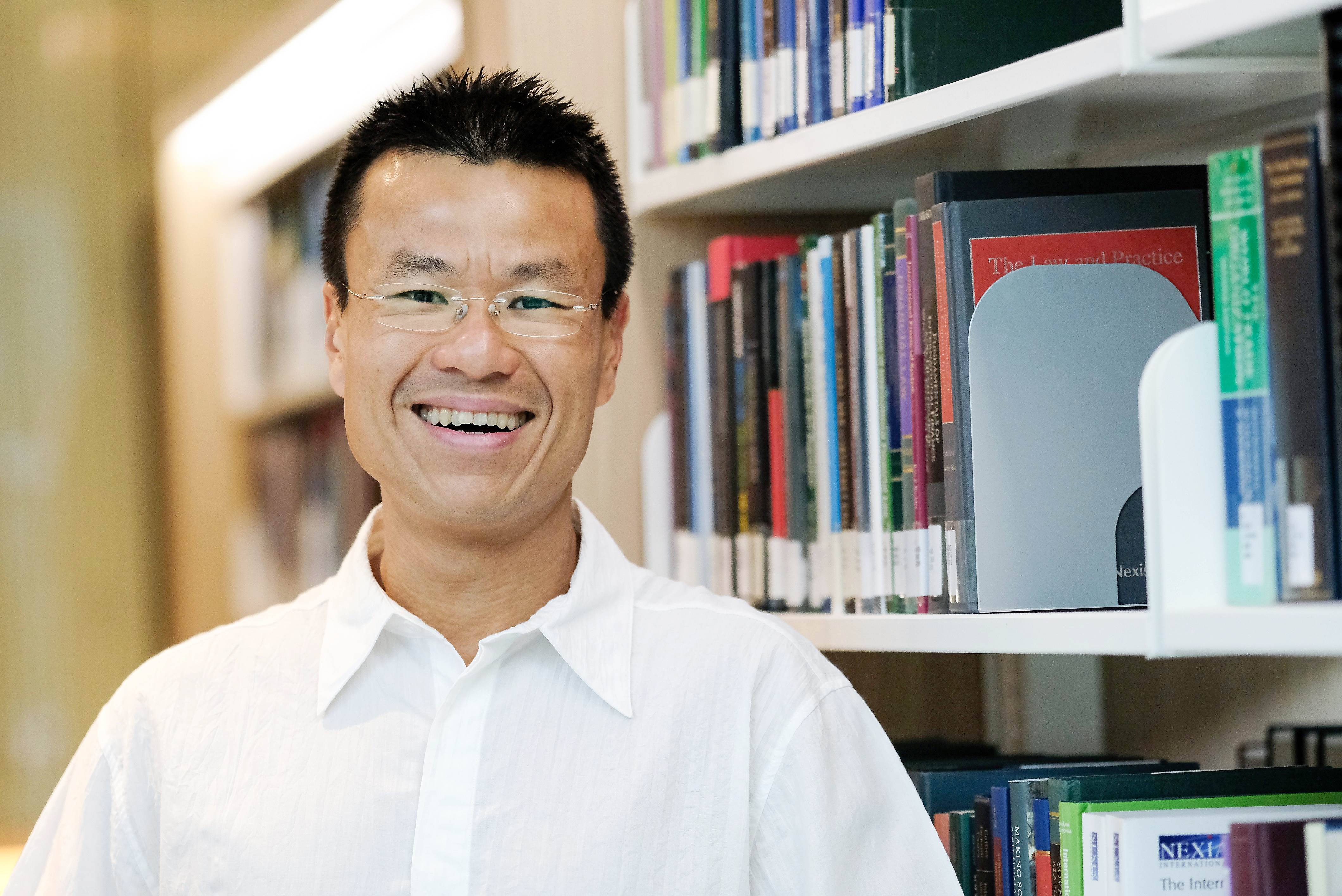
By Jeremy Chan
SMU Office of Research & Tech Transfer – Less famous than the tale of Sir Isaac Newton’s apple is the story of his feud with German polymath Gottfried Leibniz over the founding of calculus. Leibniz had been the first to author papers on the subject matter in 1684 and 1686, but when Newton published a book titled Optiks in 1704, the latter declared himself as the founding father of the immensely useful branch of mathematics.
Before the dispute could be resolved, Leibniz passed away in 1716, and decades went by before historians acknowledged both men as independent inventors of calculus. Such is the bitterness that can ensue from arguments over intellectual property (IP), or the ownership of ideas, particularly when said ideas have significant commercial value attached to them.
“Lay people are familiar with real property – which refers to land – and other forms of personal or physical property, such as tangible objects in our possession,” says Associate Professor Saw Cheng Lim, an IP law expert at the Singapore Management University (SMU) School of Law. “But the lay person may be less familiar with intangible IP rights which exist in tangible forms of property, such as copyright in a book or a painting, trademark rights in the name or logo of a business, or patent rights in a pharmaceutical drug.”
Having been fascinated with the law of IP since he was a law student, Professor Saw has dedicated his career to understanding the legal frameworks that allow innovation and entrepreneurship to flourish. From assessing patent eligibility in the biomedical sciences to contemplating the changing face of digital copyrights, there is no room for boredom at this ever-evolving frontier.
Balancing the scales
Anyone who brings a novel idea from concept to production has devoted significant time and resources to the endeavour, and would reasonably seek to prevent a stranger from simply ‘copying and pasting’ such work for profit, often at the expense of the original creator. The law of IP, which includes patents, copyrights, trademarks, industrial designs and geographical indications, therefore exists to protect innovation.
“IP rights are important and worthy of legal protection for many reasons, but I will offer just two: firstly, they incentivise and reward individual creators for their effort in producing such works or products, as well as encourage further innovation in the field for the common good. Secondly, they are valuable commodities in their own right, and can therefore be exploited commercially,” says Professor Saw.
He explains that, just like other forms of property, IP rights can be sold or licensed for hefty sums of money. The Coca-Cola trademark is a case in point, worth almost US$80 billion. In this aspect, safeguarding IP rights might be considered the equivalent of protecting one’s wealth.
However, taken to the opposite extreme, the law of IP could end up infringing on the public’s access to information and limiting freedom of expression. Finding the right balance is the mantle of IP lawyers and policymakers everywhere, and Professor Saw’s research provides insights into how different societies are handling some of the emerging issues in IP law.
Discerning discovery from invention
With the rapid progress of science and technology, Professor Saw concedes that IP laws will always lag behind the pace of innovation. Although the law will “slowly but surely” catch up, some uncertainty in the interim is to be expected, he says. This is perhaps most obvious in the field of biomedical sciences.
One of the field’s most controversial issues is the patentability of gene sequences. Professor Saw has examined how the US Supreme Court denied biotechnology company Myriad Genetics’ patent application for the discovery of the precise location and sequence of two human genes, BRCA1 and BRCA2. Mutations in both genes are associated with an elevated risk of developing breast cancer – it was Myriad Genetics’ commercial test that prompted Hollywood actress Angelina Jolie to undergo a double mastectomy in 2013.
The core of the ruling, Professor Saw found, was the distinction between discovery and invention. The apex court in the US upheld that Myriad had merely discovered the two genes – the element of inventiveness was crucially lacking, thereby ruling out patentability. Yet, reflecting the ambivalence of the law on such issues, a similar case in the United Kingdom, involving the gene neutrokine-α elicited a more pro-patentee outcome.
“My personal view is that on contentious matters of this nature, it is still preferable for parliament, after robust debates and public consultations have concluded, to take the lead in charting the future course which the law ought to take in this regard,” says Professor Saw.
Professor Saw’s analyses of these rulings were published in a 2014 Singapore Law Gazette article titled ‘Redressing the Patent Imbalance in Genetic Testing’, and in a 2016 article in Law, Innovation and Technology titled ‘Whither Gene Patenting and the Patenting of Diagnostic Methods post-Mayo and Myriad? The Need for Certainty in Navigating the High Seas of Policy’.
Exploring a dynamic digital landscape
In addition to wading through the murky waters of gene patenting, Professor Saw also studies less esoteric branches of IP law, such as the copyright implications of online activities, which include hyperlinking, framing and inline linking.
Is an individual in breach of copyright when he or she creates a hyperlink that directs internet users to copyright-infringing material located elsewhere on the internet? Does it matter if the person who posts a hyperlink has no knowledge whatsoever of the legal consequences of his or her actions? These are some of the grey areas in digital IP law that keep Professor Saw up at night.
“All of us are familiar with these online practices, but our courts in Singapore have not yet had the opportunity to consider this legal question,” he says.
Going forward, Professor Saw anticipates that the digital space will become even more complicated as artificial intelligence begins to generate original content online. IP lawyers may find it necessary to become technical experts themselves as they navigate the high seas of disruptive innovation.
“We need to first understand how the technology works and then determine whether the existing legal principles and theories can be incrementally adapted to address some of these new problems,” he says. “But if this is not possible, then it may be necessary to develop a separate set of laws to regulate the unique issues presented by these new technologies.”
Back to Research@SMU Issue 49
See More News
Want to see more of SMU Research?
Sign up for Research@SMU e-newslettter to know more about our research and research-related events!
If you would like to remove yourself from all our mailing list, please visit https://eservices.smu.edu.sg/internet/DNC/Default.aspx

